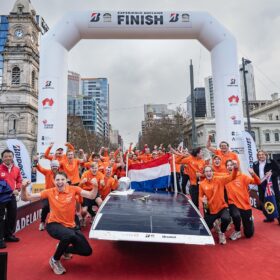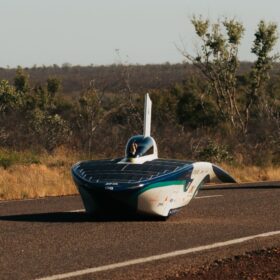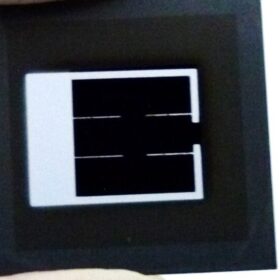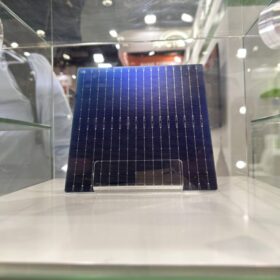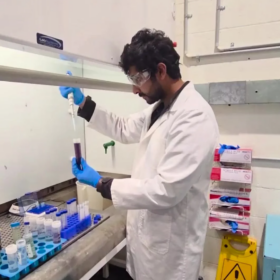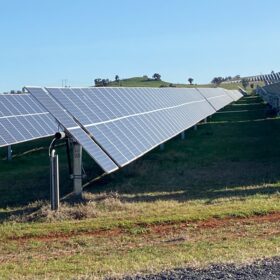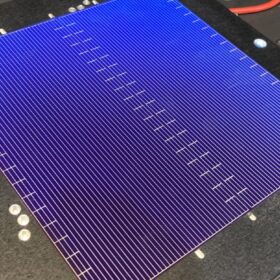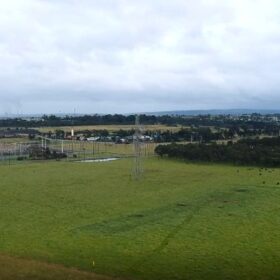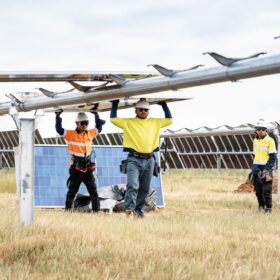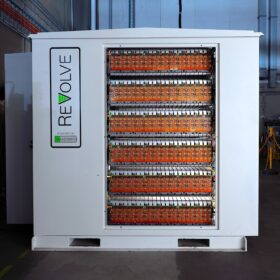Dutch teams dominate world solar challenge claiming top two positions
The Netherlands Brunel Solar Team have crossed the Bridgestone World Solar Challenge finish line in Adelaide, i first place, after travelling 3,021 kilometres from Darwin to the South Australian capital, at an average speed of 86.6 kph, and just shy of 35 hours on the road.
European teams take charge in World Solar Challenge
With more than half of the 3,000 kilometres completed, the Bridgestone World Solar Challenge is a race in three with Dutch team Brunel leading the way from compatriots Solar Team Twente and Belgian defending champions Innoptus Solar Team.
Defending champs edge ahead in World Solar Challenge
Defending Belgian champion Innoptus is on track early to secure a third consecutive win in the Bridgestone World Solar Challenge, edging ahead of their rivals after day two of the 3,000-kilometre race across the Australian Outback.
AMSL Aero lands funding to fuel hydrogen eVTOL plans
A Sydney start-up working to get its liquid hydrogen-powered, long-range plane into commercial operation has landed $3 million in federal government funding to further develop the technology and showcase its full potential in real-world environments.
Tongwei achieves 31.4% efficiency for perovskite-silicon tandem solar cell
Chinese researchers, led by a research team from PV Technology Centre of Tongwei Co., Ltd, used a sequential annealing process in the fabrication of tandem solar cells, featuring a wide bandgap perovskite top cell on a fully-textured commercial crystalline silicon heterojunction bottom cell. The resulting device had a certified power conversion efficiency of 31.4%, outperforming a 29.43%-efficient control cell.
UNSW study shows impact of soldering flux on TOPCon solar cell degradation
UNSW researchers have investigated the impact of two types of soldering fluxes on TOPCon solar modules under damp heat conditions and have found that “no-clean” soldering fluxes can cause severe corrosion of front silver-aluminum contacts. The researchers have also found that denser metallisation structures and lower aluminium content improve corrosion resistance.
New pilot facility to drive membrane technology from lab to market
A new membrane pilot facility at Monash University, Victoria is anticipated to lay foundations for breakthroughs in sustainable energy and help propel membrane science and technology research into real-world industrial solutions.
Coal waste breakthrough could unlock resources for 15 million EV magnets
Minerals to make magnets for 15 million electric vehicles is the potential of a Monash University breakthrough, turning proverbial water into wine, after extracting 17 critical minerals from coal fly ash, mine tailings, and old electronics.
Seasonally optimised PV panel tilt can boost yield by up to 9%: study
In the Indian state of Rajasthan, a new study investigates the seasonal optimisation of PV module tilt angles to optimise the energy efficiency, revealing that dynamic tilt adjustments can significantly boost annual solar yield across diverse climatic zones.
Research warns of UV-induced degradation in TOPCon solar cells from invisible light
Researchers from UNSW have found that invisible light accelerates UV-induced degradation in TOPCon solar cells, producing the same degradation effects as visible light but at a much faster rate. This can lead to significant open-circuit voltage losses and reduce cell efficiency.
